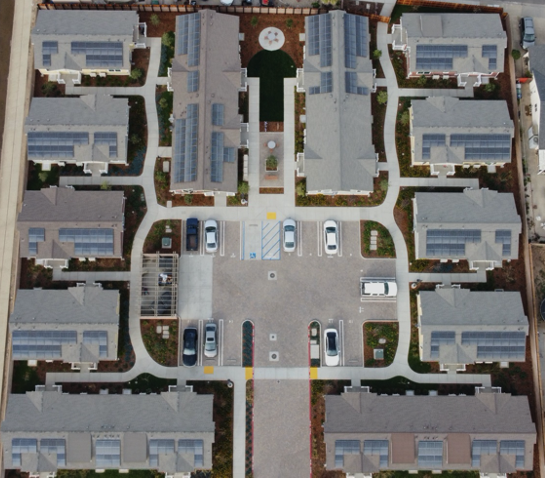West Cox Cottages is an innovative, all-electric, affordable housing project in Santa Maria serving people with special needs. It includes 12 single-story duplexes and quadplexes with 30 total rental units, a common space with a computer media center, laundry facilities, and an onsite caretaker. In Balance Green Consulting worked with the Housing Authority of the County of Santa Barbara (HASBARCO), consulting on energy optimization, photovoltaic (PV) sizing, GreenPoint Rated certification, and California Tax Credit Allocation Committee (TCAC) documentation.
Aerial of West Cox Cottages, Santa Maria
The project achieved its GreenPoint Rated certification by incorporating important features that improve energy and water efficiency, enhance indoor air quality, support resource conservation, and promote livable communities. Identifying GreenPoint certification early on helped guide the design process, ultimately leading to the decision to install Sanden Heat Pump Water Heaters, Fujitsu ductless mini-splits, and a 123.75 kW PV system.
One unique element of this project is that there were two separate builders. Atlas Performance Industries, Inc. (API) built the units as modular units at their facility, then transported them to the project site where the second builder team, Halsell Builders, took care of on-site construction. This method of modular construction provides benefits in the speed of construction, limiting weather delays, decreasing delivery trips to the job site (reducing overall transportation emissions), storing fewer materials on site, and causing less disruption to the surrounding neighborhood during construction.
Pre-fabricated parts into a whole
The now occupied West Cox Cottages project serves as a great example for how to prioritize all-electric features in multi-family housing, while pursuing GreenPoint Rated certification to build a better home for all occupants. Congratulations to the team!












